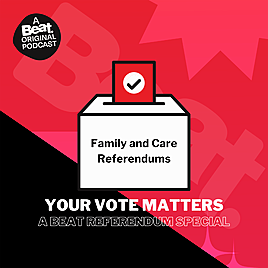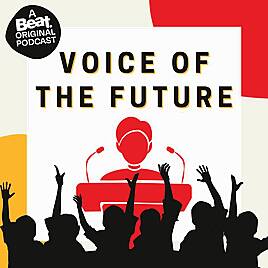
Do people eat bugs?
7 June 2024 - 14 minsYes! In many parts of the world, insects are a regular part of people’s diets. Bugs are an efficient source of protein, and many cultures find them delicious. Some countries, like the US, don’t have a strong culture of insect cuisine, but that’s starting to change as people look for ways to feed a growing global population without using as many resources as we currently do. So insects might be an important part of our future diets as well. With all the talk about cicadas this summer, eating bugs has been making news for adults. So, in this bonus episode, But Why learns about cooking up insects with Joseph Yoon, edible insect ambassador at Brooklyn Bugs.
Download transcript

Why do goats sound like humans? A Cozy Critters Collaboration
Have you ever heard a fox scream at night and thought it was a human? And why, when goats bleat, do they sometimes sound like human babies? Animals can sometimes make similar noises but not because they’re feeling the same things. It often has more to do with how similar the sound-making structures in our bodies are! In this bonus episode, we learn about how animals make sounds and how their vocal folds work with Dougie Pickles, host of the sleepy adventure podcast Cozy Critters. Download Transcript
8 mins
19 December Finished

How do oysters make their shells?
On a rainy, windy day, But Why hopped on a ferry and headed to Governors Island in New York City with one thing on our minds - oysters! We met up with Mike McCann of the Billion Oyster Project to learn more about these very special bivalves. How do they get their shells? How long do they live? What do oysters eat and who eats them? Why do people eat oysters without cooking them? Download our learning guides: PDF | Google Slide | Transcript
26 mins
12 December Finished

What’s an oboe? How does a flute work? What’s a viola?
How do musical instruments make their sounds? Why do people play music in the first place? What’s a viola bow made out of? How are musical instruments made? How much do professional musicians practice? Three musicians from the Vermont Symphony Orchestra joined families at the Vermont Public Studios for a special live episode during our Curious Kids Day live events. We hear from Melissa Meilens on flute, Katie Oprea on oboe and Stefanie Taylor on viola. Download our learning guides: PDF | Google Slide | Transcript
55 mins
28 November Finished

How big is a Macy's parade balloon?
The Macy’s Thanksgiving Day Parade is an American tradition. It’s been going since 1924. This year marks the 99th parade (it took three years off during World War II). It’s famous for elaborate floats and huge character balloons that bob above the streets as the parade marches forward. Millions of people watch the parade live in New York City each year, but many many more watch it on TV. And some of you have questions! How do they make such big balloons for the parade and how do they choose which characters to feature? And how do they hold onto the balloons with such tiny strings? And, more generally, how do balloons float? What’s helium got to do with it? But Why visits the Macy’s Studio workshop in New Jersey to see how the magic happens! Download our learning guides: PDF | Google Slide
36 mins
14 November Finished

Why are there so many colors?
What’s your favorite color? Where do colors come from?Why do people see colors? Does everyone see colors the same way? How many colors are there in the world? We learn about colors with Kassia St. Clair, the author of a book called The Secret Lives of Color. We talk about the science of color as well as all the ways color and culture are intertwined. Download our learning guides: PDF | Google Slide | Transcript
26 mins
31 October Finished

How is candy made?
Who invented candy? Why is it so sweet? Why does hard candy melt in your mouth? How are candy corn, gummies and nerds made? What makes pop rocks pop? We talk with traditional candy makers at Sticky in California and Hercules Candies in New York about how these sweet treats take their shape. And we get a little reminder about why we can’t eat sugar all day, every day. Download our learning guides: PDF | Google Slide | Transcript
19 mins
17 October Finished





















